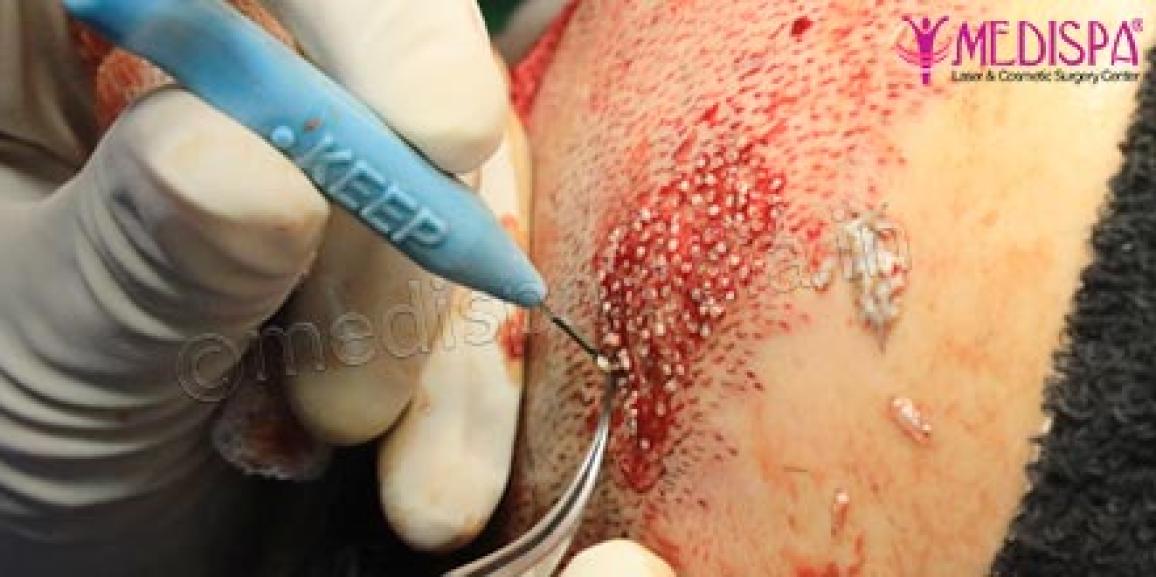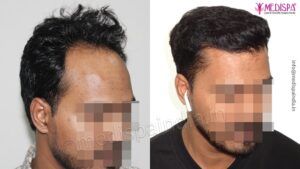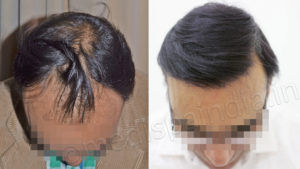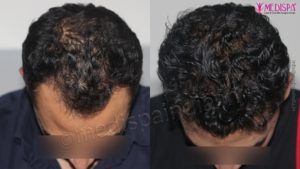
Humanity is characterised by both evolution and development, with both occurring over time as people change and technology develops. Advancements in the field of hair transplantation have been excessively slow compared to decades before, when the process was still in its infancy. However, recent developments have cleared the road for success.
The fact that hair loss patients might benefit from pleasant hair growth even after turning bald is fantastic news for them. Even after becoming bald once, hair transplant gives you a second chance to show off your hair in the way you choose.
Hair transplant procedure
A hair transplant is a minimally invasive treatment that is carried out in one session, followed by further sessions if necessary, such as in situations of significant baldness or future progressive hair loss. There are several steps that make up the entire process, including:
- Depending on the hair transplant procedure selected, hairs are cut or shaved.
- The donor and recipient areas are given local anaesthetic
- Follicular units, which are composed of follicular grafts and a suitable number of surrounding tissues, are extracted from the donor location. There are two ways to harvest grafts, FUE and FUT hair transplants
- Slitting is done with the hairline design in mind to prepare the recipient location.
- Hair follicles are transplanted into the recipient site’s prepared slits.
- Aftercare instructions are provided
- Scheduling of follow ups
The Medispa hair transplant clinic follows stringent safety and hygienic procedures to guarantee that risks and problems are eliminated. Each procedure is carried out by Dr. Suneet Soni under close loop magnification to protect the hair transplants and improve the natural results. He is one of the best plastic surgeons for hair transplant in India because of his exceptional surgical abilities and remarkable aesthetic vision. The good news also includes low hair transplant cost in India.
Hair transplant procedure and their advancements:
- Local anaesthesia administration at the donor and recipient sites: Soni adopts a more modern strategy and creative technique to make local anaesthesia administration less uncomfortable for patients. He has created a combination of anaesthetic drugs that only has to be given once over the course of the treatment, eliminating the need for further injections. The maximum time necessary for doing a hair transplant using any technique is 9 to 12 hours while the anaesthesia is in effect.
- Advancements in procedure of hair transplant:
- Trichophytic closure: Post-healing scarring at the donor site was the sole drawback of this approach. But because to more recent developments, we may benefit from this remarkable surgery with scarring that is essentially undetectable. A more recent method of suturing that leaves practically imperceptible scars is called trichophytic closure.
- Rapid harvest and early implantation: Using a punch-like instrument, the follicular grafts in the traditional FUE procedure are removed from the tissues beneath the scalp. Follicular grafts and sufficient supporting tissues are included in the pulled grafts. The tissues below the follicle are not affected, only the tissues on each side of the extra tissue are taken away. Once some time, these follicular units are implanted at the recipient site after the recipient site has been prepared. The practice of removing follicles and more out of the body time may harm the follicle and, as a result, have an adverse effect on the permanence of results.
The recipient site is prepped before to graft harvesting in a quick harvest and early implantation procedure, and the grafts are implanted right away to minimize out-of-body time. The transfer takes about 30 minutes.
The FUT procedure offers a benefit over the two methods listed above because, following strip harvesting, each individual graft is separated from the rest of the graft and is not yanked out, minimizing the risk of graft damage. The surrounding tissues are sufficient, which gives the follicles the environment and support they need to survive despite spending more time outside the body. When using the FUT procedure, the graft survival rate outside of the scalp is typically 8 to 9 hours, which is quite high.
- No root contact approach: Because handling the follicles or roots during implantation runs the risk of damaging the grafts, a more recent technique was devised that avoids touching the roots. Utilizing a tool known as “keep implanters,” this process is completed successfully.
Advantages:
- Up to 100% high survival rate
- Obtaining thicker grafts
- Least handling-related graft damage
- Combination technique of FUT and FUE: An advanced hair transplant procedure that combines FUT and FUE is quite helpful in situations of severe baldness. With his expertise in this method, Dr. Suneet Soni has provided hundreds of patients with satisfying care. With this procedure, it is feasible to harvest more than 4000 grafts, something that is not conceivable with any method by itself. Thus, this strategy enables maximal coverage in a single session. Although a large number of follicular grafts are harvested, this approach provides for the retention of grafts for subsequent sittings.
- FUT+FUE+BHT (Beard Hair Transplant) Combination Technique: Dr. Suneet Soni has developed a revolutionary method that combines FUT and FUE with the extraction or harvesting of beard hairs. This most recent method can successfully increase the bald area’s increased covering.
Previously, beard hair extraction had a scarring restriction, but Dr. Soni now effectively extracts beard hair from the “shadow region” located below the chin using a 0.75 mm punch, negating the scarring possibility.
The field of hair transplants is developing at a quicker rate, which increases the procedure’s value. What are you waiting for? If you suffer from hair loss and are seeking for a remedy, a hair transplant is unquestionably a successful and long-lasting option.







